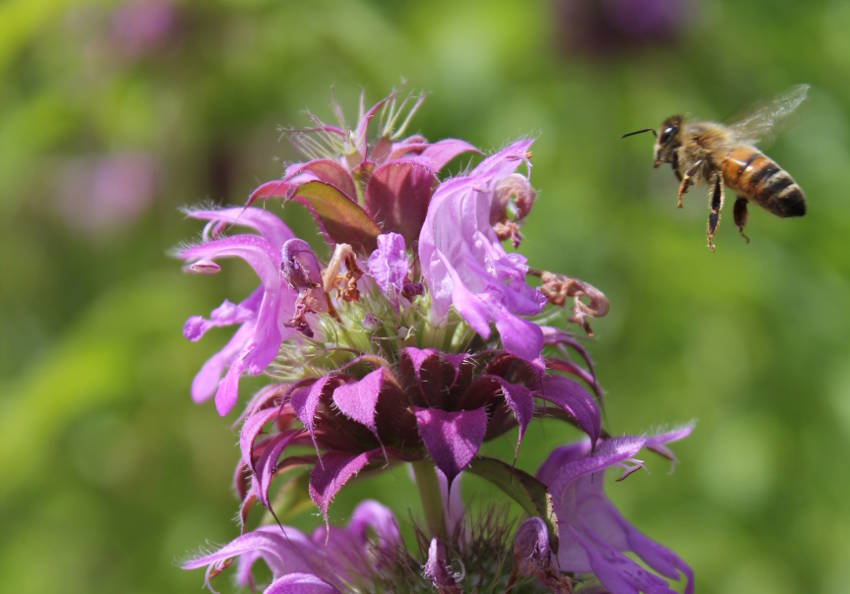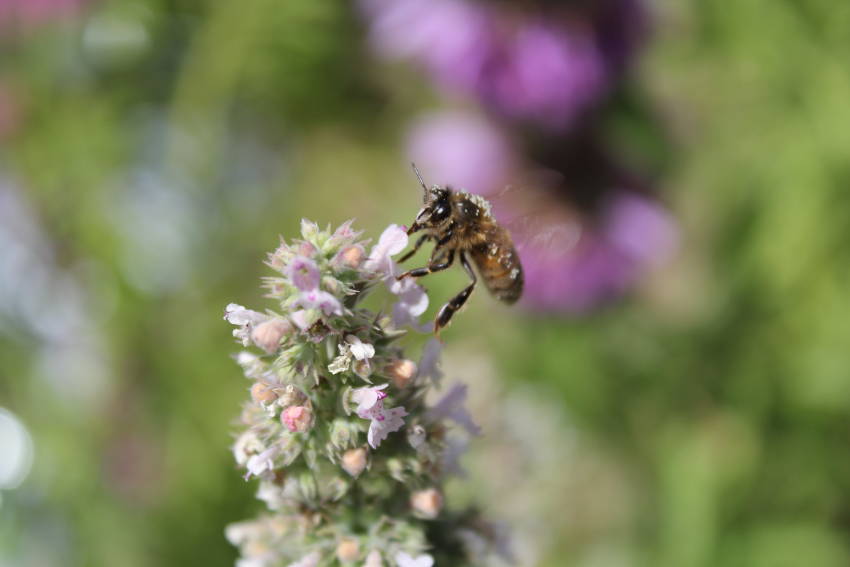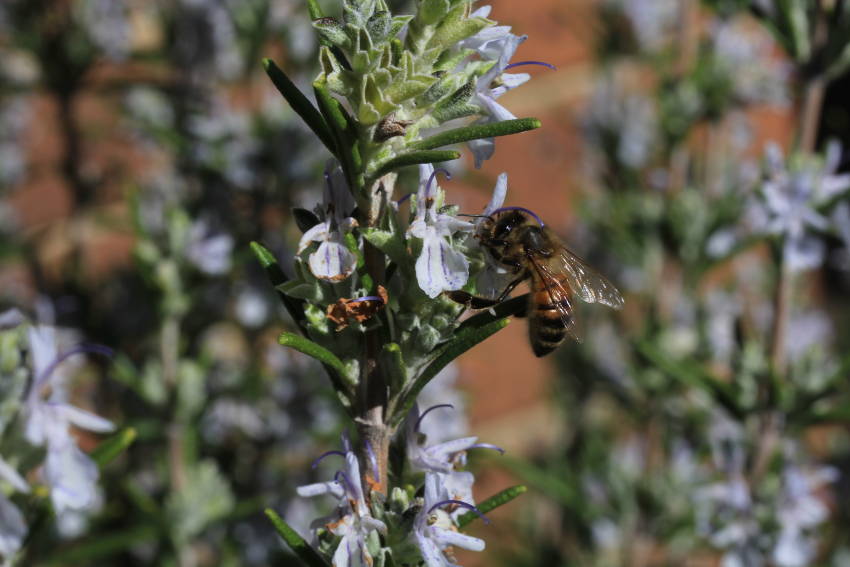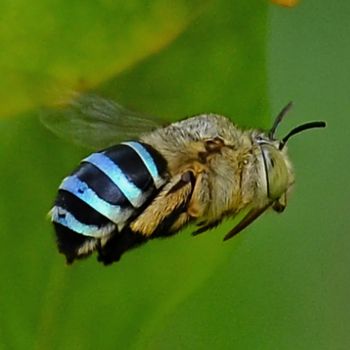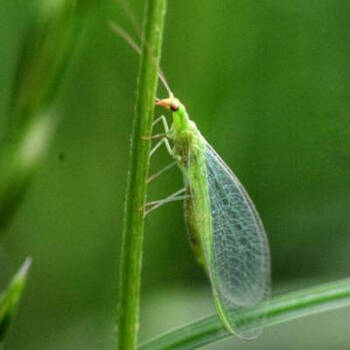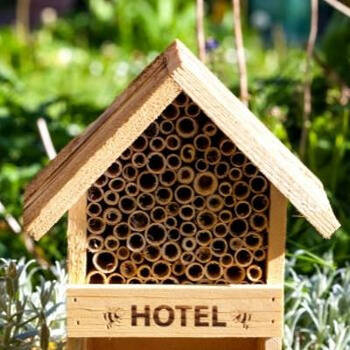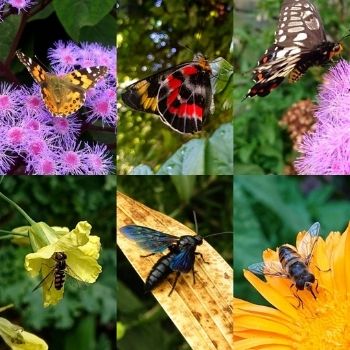Bees are an essential part of the global ecosystem. Without their help in pollination, around 35% of the world's food harvest would be in trouble, with many familiar crops dying out altogether.
However, bees are under threat from industrial agriculture, disease, and climate change. In particular, honeybees have suffered losses of up to a third of their populations across the world.
While the worst of these problems have yet to reach Australia, there's no room for complacency. Both introduced honeybees and the hundreds of native species could use a little help to keep their numbers stable and healthy.
The Problem with Modern Gardens
Unfortunately, as with so many things, apparently innocent human activity can have unintended consequences. Carefully nurtured gardens may look wonderful, but they often offer little to support the local bee population.
Many flowers bred for beauty, particularly double-headed blooms, contain little or no nectar that's easily accessible for bees. To make matters worse, many gardens offer only a few varieties of flower, with blooming compressed into a few short weeks rather than providing season-long nectar supplies.
Add to this the common obsession with tidiness that means pathways and other areas must be free of flowering weeds, and a large proportion of modern gardens don't give bees much reason to stick around.
From a bee's perspective, an ideal garden would be almost completely wild, with a year-round supply of flowers and plenty of untidy nooks and crannies to nest in. But of course, not many active gardeners would be happy with a state of complete chaos.
But it's possible to take a middle path, by growing a selection of plant species which attract and feed all kinds of bees, as well as providing some areas of suitable habitat for the many hundreds of solitary native bee species.
Bees' Favourite Bloom Types
Bees aren't particularly fussy when it comes to their flower preferences. So long as there's a good supply of nectar from different plants, and for as long a period through the year as possible, they'll be happy.
Nonetheless, they seem to have a slight preference for blooms in the white, blue, and purple parts of the spectrum, and the more highly perfumed kinds flowers also seem to be preferred. However, it's more important to provide a wide range of flowering plants rather than focusing on these particular factors.
Importantly, the beauty of a bloom to human eyes isn't necessarily a good indicator of its attractiveness to bees. Many highly decorative varieties are either low in nectar, or have their nectaries placed too deeply within the elaborate flowers for bees to easily reach.
The Best Flowers for Attracting Bees
While nearly any single-headed bloom will attract bees, some are particularly effective.
Salvia - The salvia family contains many species with the blue and white flowers which bees favour. However, the highly cultivated and decorative types are generally less well-suited to bees than the simpler varieties.
Candytuft - Flowering from mid-spring, candytuft attracts both bees and butterflies to your garden with their masses of white or pink blooms.
Sunflower - Sunflowers are easy to grow, and provide food for both bees and birds, as well as adding impressive height and colour to your garden.
Alyssum - Alyssum flowers come in a huge range of colours, blooming over a long season. In helpful climates, they will often self-seed to produce multiple generations for an even longer flowering season.
Cosmos - One of the best flowers for attracting bees, cosmos can be kept in bloom throughout the summer with regular deadheading.
Nasturtiums - Easy to grow thanks to their self-seeding habit, nasturtiums provide masses of red, yellow, and white blooms which bees love. And as a bonus, all parts of the plant are edible with a delicious peppery flavour.
Cornflower - Not only are the flowers high in nectar, but the unopened buds and seed heads provide nectaries too.
Bee-Friendly Herbs
But it's not just ornamental flowers which provide a nectar feast for bees. Many medicinal and culinary herbs feature attractive flowers, and some seem to be particularly prized by bees.
Lemon Balm - This vigorous herb produces masses of tiny white flowers which seem to be appreciated far more by bees than by humans. The flowers appear from early summer through to autumn.
Lavender - Highly perfumed blooms in a variety of blue shades make lavender a positive bee magnet. Also, the wide range of cultivars available means you can have successional flowering from early spring to late summer.
Rosemary - This kitchen superstar may not bloom as spectacularly as its distant cousin lavender, but its white, blue, pink, or purple flowers are highly attractive to bees.
Catnip - Also known as catmint, this herb produces mauve blooms on contrasting grey foliage, making it as decorative as it is bee-friendly.
Coriander - Keen herb growers will be only too familiar with coriander's tendency to bolt at the first sign of trouble. However, bees will be grateful for the plant's delicate white flowers, whether they arrive by accident or by design. As a bonus, the flowers also act as an aphid deterrent in a companion planting scheme.
Basil - Basil may be best known for its fragrant leaves, but if left to grow to maturity it'll produce white, blue, or purple flowers in late summer and early autumn.
Other herbs which encourage bees include Queen Anne's lace, borage, chives, thyme, and members of the mint family.
Bees in the Vegetable Patch
Vegetables can play their part in the bee-friendly garden in two main ways. Some produce flowers as part of their fruiting cycle, while others such as carrots can be left to go to seed, producing flowers later in the season or in their second year.
Zucchini, pumpkins, cucumber, and other members of the curcubit family rely on bees for pollination. Both the male and female flowers contain plenty of nectar, and bees pass pollen from one to the other while feeding.
But even self-pollinating crops such as tomatoes and chillies have a symbiotic benefit with bees. Native bees can increase fruit yields by 'buzzing' pollen around the blooms with their wings. This helps pollination in areas where the breeze alone might not be fully effective.
Peas are also self-pollinating, but still attract bees with their white or pink flowers appearing in spring. Other legumes such as runner beans provide flowers throughout the summer so long as you continue to pick the fruit.
Lastly, you can also increase the bee appeal of your veggie patch by growing rocket, lettuce, and other salad greens. Let some of the plants bolt to seed, and they'll produce bee-friendly flowers along the way.
Other Ways to Help Bees
While providing plenty of nectar-filled flowers is the best way to attract bees, it's also helpful to create suitable habitats for solitary species to set up home in your garden.
Some species live in rotting wood, so leave a few logs lying around in a quiet corner. Drilling holes into them will help make them even more desirable as residences.
Other native species burrow into bare soil, so avoid the temptation to mulch every square inch of your garden. Still, others make their homes in rocky crevices, and so leaving a few unfilled cracks can encourage new residents.
Lastly, the single biggest deterrent to bees in your garden is to use insecticides on your plants. These poisons can linger in flowers and their nectar for weeks or months after application, and commercial overuse is thought to be behind much of the devastation caused to bee populations around the world.
Without bees, a large proportion of agriculture would be in serious trouble. While the problems facing bees worldwide will only be solved by concerted action, everyone can do their bit to help by gardening with these essential workers in mind.
Above: Bee hovering around Lemon Bergamot
Above: Bee on Catnip
Above: Bee on Rosemary


